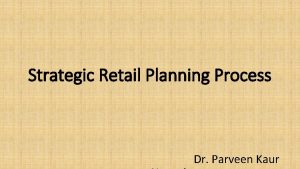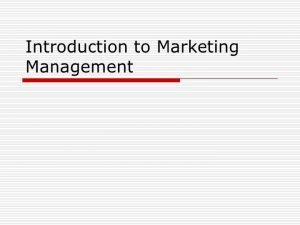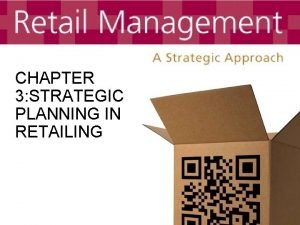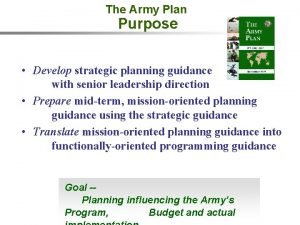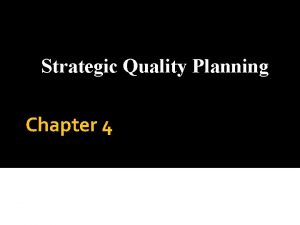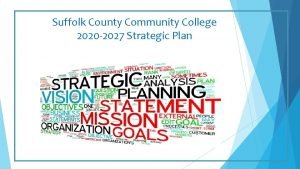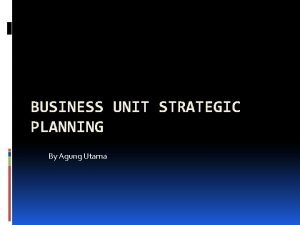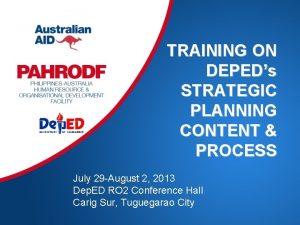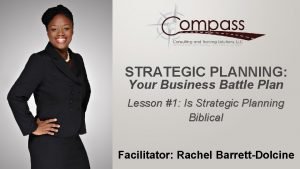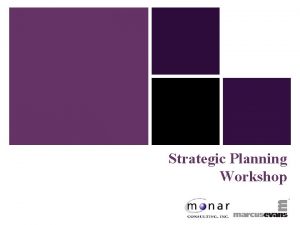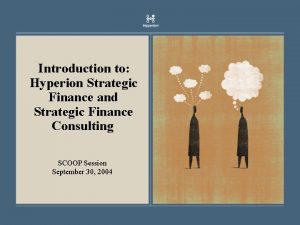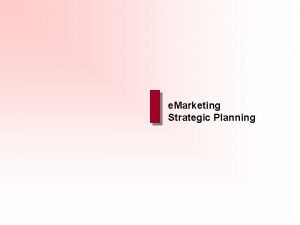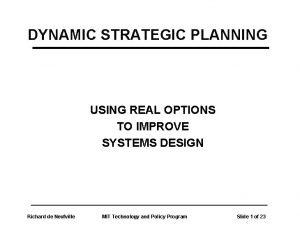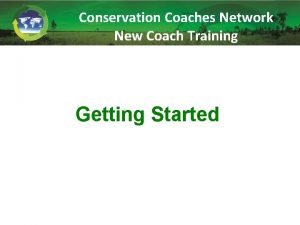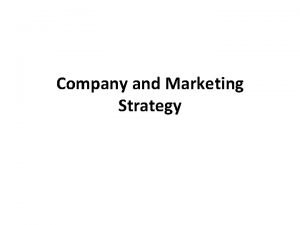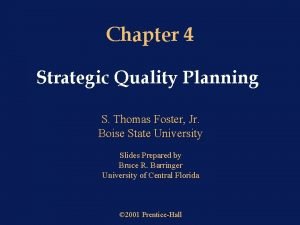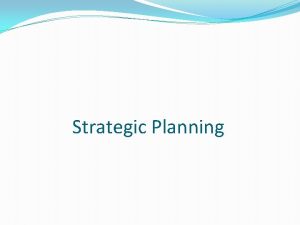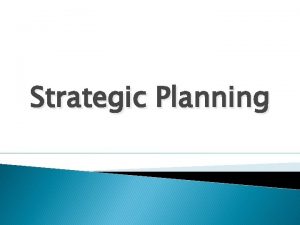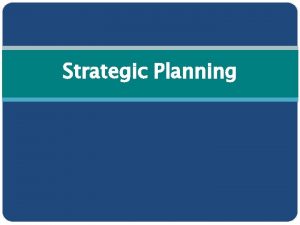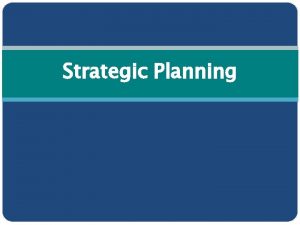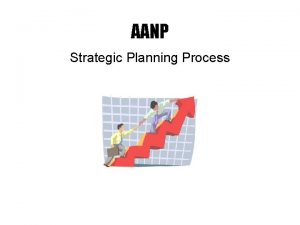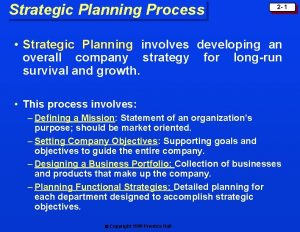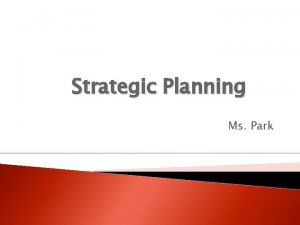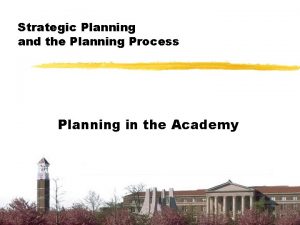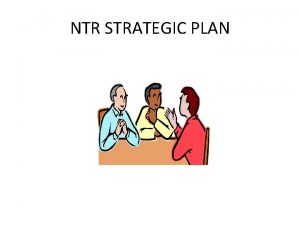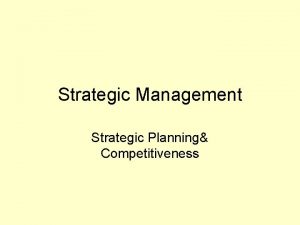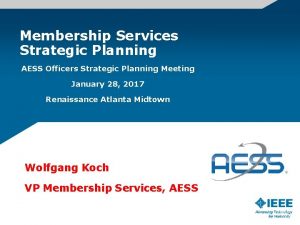The strategic HR planning process The Process of
























- Slides: 24

The strategic HR planning process

The Process of Human Resource Planning • Organizations need to do human resource planning so they can meet business objectives and gain a competitive advantage over competitors. – Human resource planning compares the present state of the organization with its goals for the future – Then identifies what changes it must make in its human resources to meet those goals

The strategic HR planning process has four steps: • Assessing the current HR capacity • Forecasting HR requirements • Gap analysis • Developing HR strategies to support organizational strategies

First step Assessing the current HR capacity

Assessing current HR capacity • The first step in the strategic HR planning process is to assess the current HR capacity of the organization • The knowledge, skills and abilities of your current staff need to be identified. This can be done by developing a skills inventory for each employee

• The skills inventory should go beyond the skills needed for the particular position. List all skills each employee has demonstrated. • For example, recreational or volunteer activities may involve special skills that could be relevant to the organization. Education levels and certificates or additional training should also be included.

• An employee's performance assessment form can be reviewed to determine if the person is ready and willing to take on more responsibility and to look at the employee's current development plans.

Second Step Forecasting HR requirements

• The next step is to forecast HR needs for the future based on the strategic goals of the organization • HR Forecasting attempts to determine the supply and demand for various types of human resources, and to predict areas within the organization where there will be labor shortages or surpluses

• There are three major steps to forecasting: • Forecasting the demand for labor • Determining labor supply • Determining labor surpluses and shortages

Forecasting the demand for labor • How many people need to be working and in what jobs to implement organizational strategies and attain organizational objectives. • Usually an organization forecasts demand for specific job categories or skill areas. • After identifying the relevant job categories or skills, the planner investigates the likely demand for each.

• The planner must forecast whether the need for people with the necessary skills and experience will increase or decrease. • Constructing and applying statistical models that predict labor demand for the next year, given relatively objective statistics from the previous year.

• Determining labor supply. Predicting Worker Flows and Availabilities • Succession or Replacement Charts Who has been groomed/developed and is ready for promotion right NOW? • Human Resource Information Systems (HRIS) An employee database that can be searched when vacancies occur. • Transition Matrices (Markov Analysis) A chart that lists job categories held in one period and shows the proportion of employees in each of those job categories in a future period. It answers two questions: 1. “Where did people in each job category go? ” 2. “Where did people now in each job category come from? • Personnel / Yield Ratios How much work will it take to recruit one new accountant?

Determining Labor Surplus or Shortage • Based on the forecasts for labor demand supply, the planner can compare the figures to determine whethere will be a shortage or surplus of labor for each job category. • Determining expected shortages and surpluses allows the organization to plan how to address these challenges.

• When forecasting demands for HR, you must also assess the challenges that you will have in meeting your staffing need based on the external environment. To determine external impacts, you may want to consider some of the following factors: • How does the current economy affect our work and our ability to attract new employees? • How do current technological or cultural shifts impact the way we work and the skilled labour we require? • How is our community changing or expected to change in the near future?

Third step Gap analysis

The Basic Elements of Human Resource Planning (1) Forecast Labor Requirements Compare (2) Forecast Labor Availabilities (4) Determine Gaps (5) Develop Action Plans

• The next step is to determine the gap between where your organization wants to be in the future and where you are now. • The gap analysis includes identifying the number of staff and the skills and abilities required in the future in comparison to the current situation.

• You should also look at all your organization's HR management practices to identify practices that could be improved or new practices needed to support the organization's capacity to move forward

Questions to be answered include: • What new jobs will we need? • What new skills will be required? • Do our present employees have the required skills? • Are employees currently in positions that use their strengths? • Do we have enough managers/supervisors? • Are current HR management practices adequate for future needs?

Fourth Step Developing HR strategies to support organizational strategies

There are many HR strategies for meeting the labor surplus or shortage in the future. Surplus • • • Restructuring strategies Hiring freeze Layoffs Transfer Reduce work time Reduce part-time Shortage • • • New Hires Transfer Training/Retrain Overtime Part-time

• Restructuring strategies This strategy includes: 1. Reducing staff either by termination or attrition: v Termination is the act of making a person leave a job. Generally, there will be costs associated with this approach depending on your employment agreements. v Attrition: Attrition not replacing employees when they leave. 2. Regrouping tasks to create well designed jobs: v It will mean that jobs performed in the organization will have to be reorganized so that essential work of the departing employee is covered. 3. Reorganizing work units to be more efficient.

• Hiring freeze: an employer decides to stop hiring new employees • Layoffs : the act of firing employees. • Transfer: from department to other. • Reduce work time: Sometimes existing workers may be willing to voluntarily reduce their hours, especially if the situation is temporary. Job sharing may be another option. • Reduce part-time
 Strategic planning vs tactical planning
Strategic planning vs tactical planning Retail strategic planning process
Retail strategic planning process Marketing process steps
Marketing process steps Strategic planning process for global retailing
Strategic planning process for global retailing Army strategic planning process
Army strategic planning process What is strategic quality planning
What is strategic quality planning Strategic planning process suffolk
Strategic planning process suffolk Agung utama
Agung utama Why strategic planning is important to all managers?
Why strategic planning is important to all managers? Strategic fit vs strategic intent
Strategic fit vs strategic intent Strategic substitutes
Strategic substitutes Strategic competitiveness
Strategic competitiveness Tows matrix
Tows matrix Rational sequential and analytical strategizing
Rational sequential and analytical strategizing Is strategic planning biblical
Is strategic planning biblical Strategic planning workshop exercises
Strategic planning workshop exercises Strategic planning in retailing
Strategic planning in retailing Activity 1 know thyself better let's get swot-ing
Activity 1 know thyself better let's get swot-ing Hyperion strategic finance
Hyperion strategic finance Global marketing
Global marketing E marketing strategic planning
E marketing strategic planning Dynamic strategic planning
Dynamic strategic planning Strategic conservation planning
Strategic conservation planning Explain company-wide strategic planning and its four steps
Explain company-wide strategic planning and its four steps Strategic quality planning
Strategic quality planning

